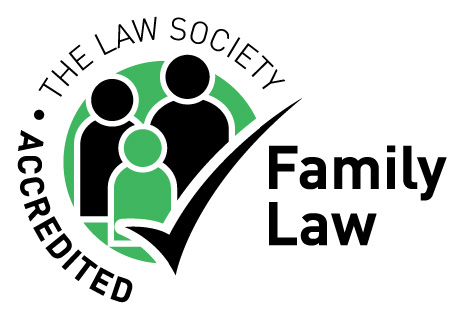As the dust settles on the beginning of January and everyone settles into the new year as much as possible given the impact of the pandemic, Kaajal Nathwani sets out the main changes and what to look out for as we brace ourselves for what is expected to be a very busy year in employment law.
National Lockdown
What a way to start the year, although not unexpected, 6 January 2021 marked the start of the third lockdown in England restricting people leaving home and requiring them to work from home if possible. Whilst the majority of employers have already successfully managed the impact both socially, and economically of the lockdown situation, the latest measures have seen many more casualties in the form of closures of leading names on the high street and spates of redundancies, as well as the confusion around businesses that can stay open and those that can’t, employees who can come to work, those who can’t and those who won’t, the quandaries continue.
Brexit
After talking about it and the implications to businesses for so long, it came and went in a flash, overshadowed somewhat by the continued mayhem of the global pandemic. As of 1 January 2021, free movement of people ended and with it came a whole new raft of immigration laws and the debated points-based system attributed to the ‘skilled worker route’. In summary under this system workers:
- Must be of a skilled occupation as per skilled occupation list
- Must be able to speak English
- Have at least ‘A’ level or equivalent qualifications,
- Have a job offer from a licenced sponsor
- Earn at least £25,600 per year (unless the skilled worker is from the shortage occupational list).
Employers will require a sponsor licence to recruit non-UK workers and pay a fee of £199 for every sponsorship licence issued, plus £1,000 per skilled worker for the first 12 months, with an additional £500 charge for each subsequent 6 month period. Employers are advised to apply for a licence if they intend to take on foreign workers as soon as possible.
Final Farewell Furlough?
Following the extension of the Coronavirus Job Retention Scheme (CJRS) and the enforced lockdown, currently the CJRS is due to end on 30 April 2021.
Whilst it is widely speculated that the scheme may well be extended as part of the overall budget considerations, employers are advised to start planning for this change.
Holidays (maybe not in the sun)
The Working Time Regulations 1998 were amended following the national lockdown in March 2020 to permit employees to carry over up to four weeks accrued annual leave into the next two holiday years if they were not able to take holiday in 2020 because of covid19. Employers need to be mindful of the operation of this statutory amendment and the impact that it will have on the workforce in practice and their cash flow.
IR35 overhaul
From 6 April 2021, large and medium-sized organisations who engage contractors through intermediary (personal services) companies will be responsible directly for assessing the employment status of any contractors engaged by them. If it decides the contractor is an employee for tax purposes, it becomes responsible for paying PAYE and National Insurance contributions on the fees paid to the personal service company. These changed rules that were due to come into force in April 2020 but were delayed due to the global pandemic.
Gender Pay Reporting
On 14 December 2020, a new set of guidance was published for employers on gender pay gap reporting requirements. The 2019/2020 reporting period was suspended last year due to the COVID-19 outbreak. The 2020/2021 reporting period (which is based on data at the snapshot date of 5 April 2020) has not been suspended, so qualifying employers will need to report this period's gender pay gap by 4 April 2021.
The new guidance includes information on who needs to report their gender pay gap, what data must be gathered, how to carry out the relevant calculations (taking into consideration the impact of furlough) , what information must be reported and how to publish the report.
Redundancy and Pregnancy
Currently, those on maternity leave who are at risk of redundancy must be offered suitable alternative roles before someone who is not on maternity leave. A change in law will see this protection kick in from the date the employee informs the employer of pregnancy, and this can be either verbally or in writing. This protection also will last for a further six month period once the employee returns to work. It is expected that employees will inform employers of their pregnancy earlier than issue of the MATB1 Certificate or after their scans, as is usual practice so as to be afforded this protection earlier. It is not yet known when this will come into force.
NMW Increase
New National Minimum Wage rates apply from 1 April 2021 and are:
- Age 23 or over national living wage rate £8.91
- Age 21 to 22 £8.36
- Age 18 to 20 £6.56
- Age 16 to 17 £4.62 and apprentice rate £4.30.
Previously the national living wage rate only applied to those aged over 25 or over.
Statutory rates increases
From 12 April 2020:
- Maternity, paternity, shared parental pay, adoption £151.97
- Sick Pay £96.35 per week.
Modern Slavery Statements
The Government is committed to making changes to the rules on publishing modern slavery and human trafficking statements. It will be mandatory for organisations to report on certain areas of the organisation when publishing statements and they will be required to publish their reports on the Government Reporting Service with a single reporting deadline. The duty to publish statements will be extended to public sector bodies with a budget of thirty-six million or more.
The Government is expected to publish further guidance on this with regards to best practice.
Information correct at the time of publication.
For further information on any employment related matters please contact Kaajal Nathwani on 020 8363 4444.

















